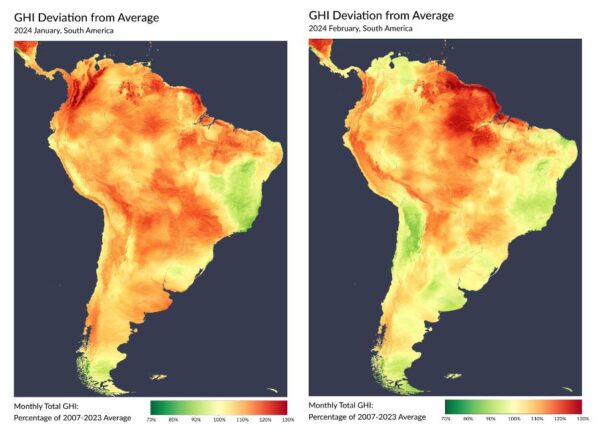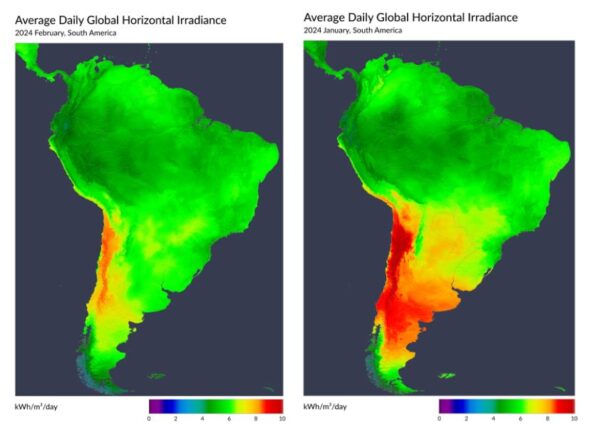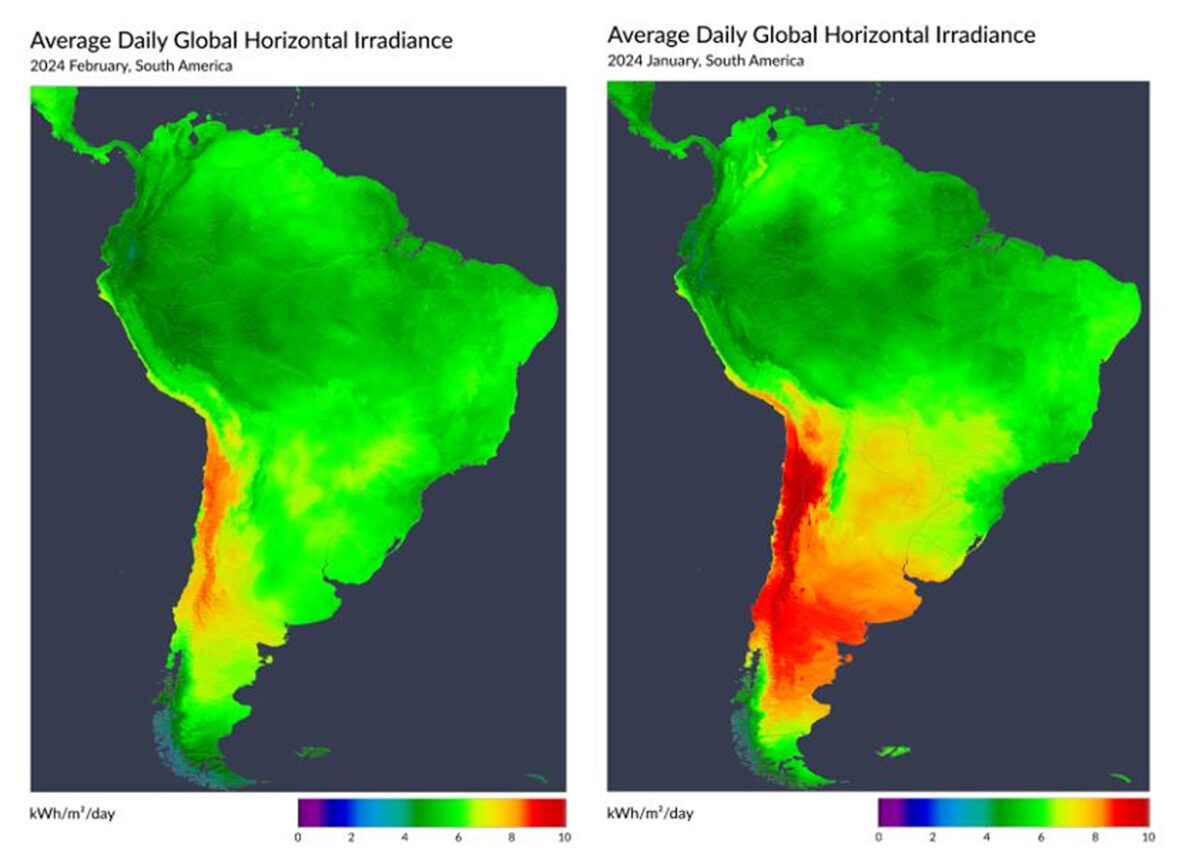The Latam region has started 2024 greatly exceeding its average solar production performance, according to analysis completed using the Solcast API. Long term analysis showed that during January and February, Chile, Uruguay and Argentina saw irradiance up 5% to 15% above normal. Brazil as a whole was around 20% above normal, although the solar production regions in the east had mixed results.

Responsible for the surplus sunlight across South America was the ongoing Amazon drought, and circulation changes that pushed weather fronts further south of the continent than usual. Summer in the Amazon is normally characterised by hot and humid conditions, and afternoon thunderstorms driven by evaporation and resulting convective cloud. With the current long term drought, there is not enough
moisture to drive this evaporative process, contributing to the widespread above average irradiance.
Central America also saw irradiance well above normal, about 20% up along the isthmus and also extending north into Mexico. The sunnier skies were driven by weaker-than-usual Caribbean tradewinds failing to push moisture onshore. Some areas saw up to 30% more irradiance than normal, including regions in equatorial Brazil, French Guiana, Suriname, Guyana, Venezuela and Colombia.
The data, which Solcast creates using satellite data calibrated to ground measurements, showed that Chile and Argentina were the sunniest places in the region during January and February, averaging 8-10 kWh/m2/day. Chile saw the highest total irradiance, continuing the pattern of seeing some of the highest irradiance in the world.
Popular content

Solcast produces these figures by tracking clouds and aerosols at 1-2km resolution globally, using satellite data and proprietary AI/ML algorithms. This data is used to drive irradiance models, enabling Solcast to calculate irradiance at high resolution, with typical bias of less than 2%, and also cloud-tracking forecasts. This data is used by more than 300 companies managing over 150GW of solar assets globally.
The views and opinions expressed in this article are the author’s own, and do not necessarily reflect those held by pv magazine.
This content is protected by copyright and may not be reused. If you want to cooperate with us and would like to reuse some of our content, please contact: editors@pv-magazine.com.


2 comments
By submitting this form you agree to pv magazine using your data for the purposes of publishing your comment.
Your personal data will only be disclosed or otherwise transmitted to third parties for the purposes of spam filtering or if this is necessary for technical maintenance of the website. Any other transfer to third parties will not take place unless this is justified on the basis of applicable data protection regulations or if pv magazine is legally obliged to do so.
You may revoke this consent at any time with effect for the future, in which case your personal data will be deleted immediately. Otherwise, your data will be deleted if pv magazine has processed your request or the purpose of data storage is fulfilled.
Further information on data privacy can be found in our Data Protection Policy.